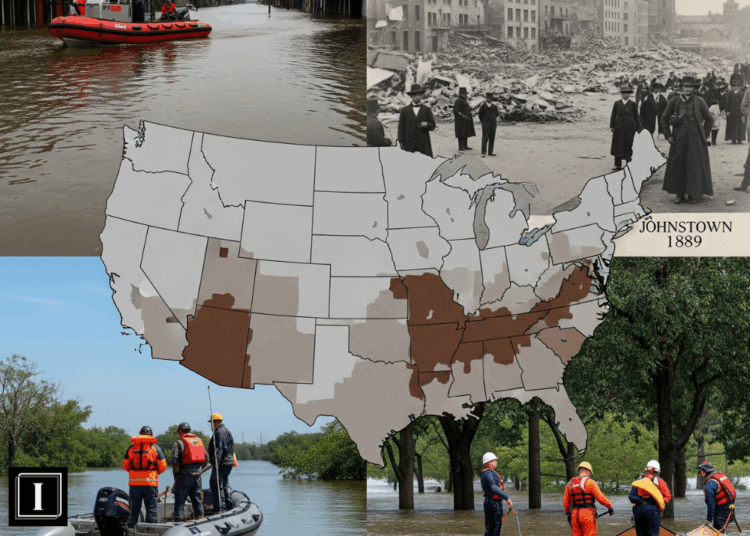America’s Deadliest Floods: A History of Tragedy and Resilience
The recent catastrophic flooding in Texas Hill Country has left a nation heartbroken. As rescue missions continue and the death toll rises, Americans are reminded of the country’s long history of deadly flood disasters.
In the latest event, floodwaters surged through Kerrville, Texas, rising from less than a foot to over 34 feet in a matter of hours between July 3 and 4. The rapid escalation, fueled by relentless rainfall, claimed dozens of lives—including children and counselors at a local summer camp. But while the tragedy is fresh and painful, it echoes many historical disasters that have marked America’s struggle with waterborne catastrophes.
Here’s a chronological look at some of the deadliest floods in US history, based on the number of lives lost and the scale of destruction.
1889: The Johnstown Flood — America’s Deadliest
The Johnstown Flood remains the deadliest flood in U.S. history. On May 31, 1889, the South Fork Dam collapsed, unleashing over 20,000 tons of water onto Johnstown, Pennsylvania. More than 2,200 people perished in what was one of the nation’s earliest and most devastating engineering failures.
Today, visitors can pay tribute at the Johnstown Flood National Memorial, a stark reminder of human vulnerability and the consequences of poor infrastructure oversight.
2005: Hurricane Katrina — A Modern Catastrophe
Hurricane Katrina made landfall in August 2005, tearing through the Gulf Coast with Category 4 intensity. The failure of New Orleans’ levee system turned the natural disaster into a humanitarian crisis.
The storm resulted in 1,833 deaths and caused damages exceeding $100 billion, according to the National Weather Service. Scenes of flooded neighborhoods and rooftop rescues remain among the most haunting images in American history.
1913: The Great Flood of Ohio
The Great Flood of 1913 began on March 21 and lasted five days, dumping 11 inches of rain—an entire season’s worth—across Ohio. Major cities like Columbus, Dayton, and Cincinnati were submerged, causing widespread destruction and claiming at least 467 lives.
The catastrophe reshaped the state’s infrastructure and prompted new flood control measures. The cost of the damage was estimated at $100 million, a staggering figure for the time.
1928: St. Francis Dam Collapse
On March 12, 1928, the St. Francis Dam north of Los Angeles failed just before midnight, releasing nearly 12.4 billion gallons of water into the San Francisquito Canyon.
The civil engineering failure resulted in the deaths of around 450 people. At its peak, the wall of water was measured at 140 feet high. This disaster led to stricter regulations and changes in dam safety protocols nationwide.
1937: The Ohio River Flood
In January 1937, relentless rainfall caused the Ohio River to rise to record levels, flooding areas from Pittsburgh to Cairo, Illinois. In Cincinnati, the water reached an estimated 80 feet, submerging 15–20% of the city.
The flood left at least 350 people dead and made nearly 1 million people homeless. It compounded the struggles of the Great Depression and exposed the need for improved flood control and relief systems.
2025: Texas Hill Country Flash Floods
The recent flash floods in Texas Hill Country are the latest addition to this tragic history. Rising waters in Kerrville surged dramatically in mere hours, killing dozens and destroying homes, businesses, and communities.
The floods were especially devastating due to the sudden nature of the event and the vulnerability of affected areas, including summer camps and remote neighborhoods. As recovery efforts continue, the nation watches with bated breath, offering aid and prayers.
Conclusion:
These events are not only records of destruction but also powerful reminders of the urgent need for infrastructure upgrades, climate resilience planning, and community preparedness. As natural disasters grow more intense due to climate change, learning from past floods is vital to protect future generations.
Read more insights on disaster impact, climate resilience, and infrastructure accountability in the top business magazine, only at IMPAAKT.











